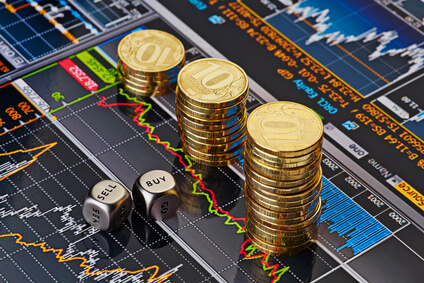In the forex market, human error is widespread and often results in recurrent trading blunders. Inexperienced traders are more likely to make these kinds of blunders. Traders that are aware of these mistakes may improve their forex trading efficiency. Consider these 10 typical mistakes before you start Forex trading.

Don’t Chase Your Losses
Your win rate and risk-to-reward ratio are two important metrics to keep an eye on while trading.
Your win rate is the proportion of deals in which you succeed. As an example, if you win 60 out of 100 deals, you have a win rate of 60%. A day trader should aim for a win rate of at least 50%. Keep your reward-risk ratio over 1, and even better, above 1.25.
If your win rate is lower and your reward risk is greater, you may still be lucrative. To keep things simple, aim for a reward-to-risk ratio of more than 1.25 and tactics that win more than half the time.
No Trading Strategy
Traders who do not have a trading plan are more likely to act erratically since their method lacks consistency. Every transaction has a set of predetermined principles and procedures, which are known as trading strategies.
Until you start trading, it should be mentioned that you must look for information about how to trade forex for beginners in order to get familiar with the FX market and the way it works. After that, you’ll be able to generate your own strategy. Devoting time and effort to a trading strategy is essential since straying from it might lead to a change in trading style. As a consequence, traders are more likely to make errors owing to a lack of experience.
Not Using Stop Loss
Every FX day transaction should have a stop-loss order in place. A stop-loss order is an order to exit a position if the price goes against you by a predetermined amount.
Your investment is far less risky when you have a stop-loss order in place for it. Having a stop loss in place keeps you from losing more money than you can bear.
Risking Too Much
Ideally, day traders should risk no more than 1% of their total money on any one transaction. If a stop-loss order terminates a transaction with a loss of less than 1% of trading capital, it does so.
If you lose numerous transactions in a row, you’ll only lose a modest percentage of your cash. Each successful transaction pays for itself if you make more than 1% of your losses back.
Controlling daily losses is another part of risk management. Even if you just put up 1% of your funds at risk on each transaction, a poor day might wipe out all of your savings.
Going All In
When you’re on a winning run, it might seem like you’re invincible. A mistake is compounded if one accepts a risk that is too high. A stop-loss order has been used by traders hoping for a turnaround. Many people also get caught up in retaining their margin, believing that it will turn around and they’ll earn a lot of money.
Choosing the Wrong Broker
The greatest investment you’ll ever make is with a forex broker. You might lose all of your money if the company is badly run, in financial difficulty.
Selecting a broker should not be rushed, there are five steps to take when picking a Forex broker to work with. First of all, keep in mind your goals, familiarize yourself with what the broker has to offer, and seek out references from reputable sources. Then, utilize tiny transactions to assess the broker’s services and avoid accepting incentive offers with their services.
Trading with the Use of Fundamental or Economic Data
Even if you don’t pay attention to economic news for long, it’s simple to create an opinion about a nation or currency based on what you read.
When you’re day trading, the long-term fundamental outlook has little bearing on your decisions. No matter which way your strategy advises you to trade, your sole purpose is to put it into action. The value of bad investments might rise briefly, while the value of excellent investments can fall temporarily.
Inconsistent Trading Size
Many traders choose trade sizes that are inappropriate for the size of their accounts. As a result, the risk grows, with the potential to wipe out any remaining account funds. Only risk 2% of your whole account size. For example, if the account has $10,000 in it, the proposed limit risk per transaction is $200. Overexposure to the account may be alleviated if traders follow this basic guideline.
Taking Multiple Trades
You’ve probably heard that it’s a good idea to broaden your horizons. “Diversification is a good thing,” Warren Buffett once stated.
A trade setting that appears in numerous currency pairings is likely to be connected. Because of this, you are seeing the identical configuration in each one. When two underlying assets are linked, they move in lockstep, increasing the likelihood that you will profit or lose on all of your bets.
Trading on Numerous Markets
Traders can get the expertise they need to become competent in a small number of markets by focusing their efforts on just a few of those areas. Due to a lack of knowledge, many newbie forex traders attempt to trade on numerous markets with little success.
Many people were caught up in the Bitcoin fever of 2018 and had no idea what they were getting themselves into. Due to the ‘FOMO or Euphoria’ stage, many traders joined the market, resulting in large losses.
